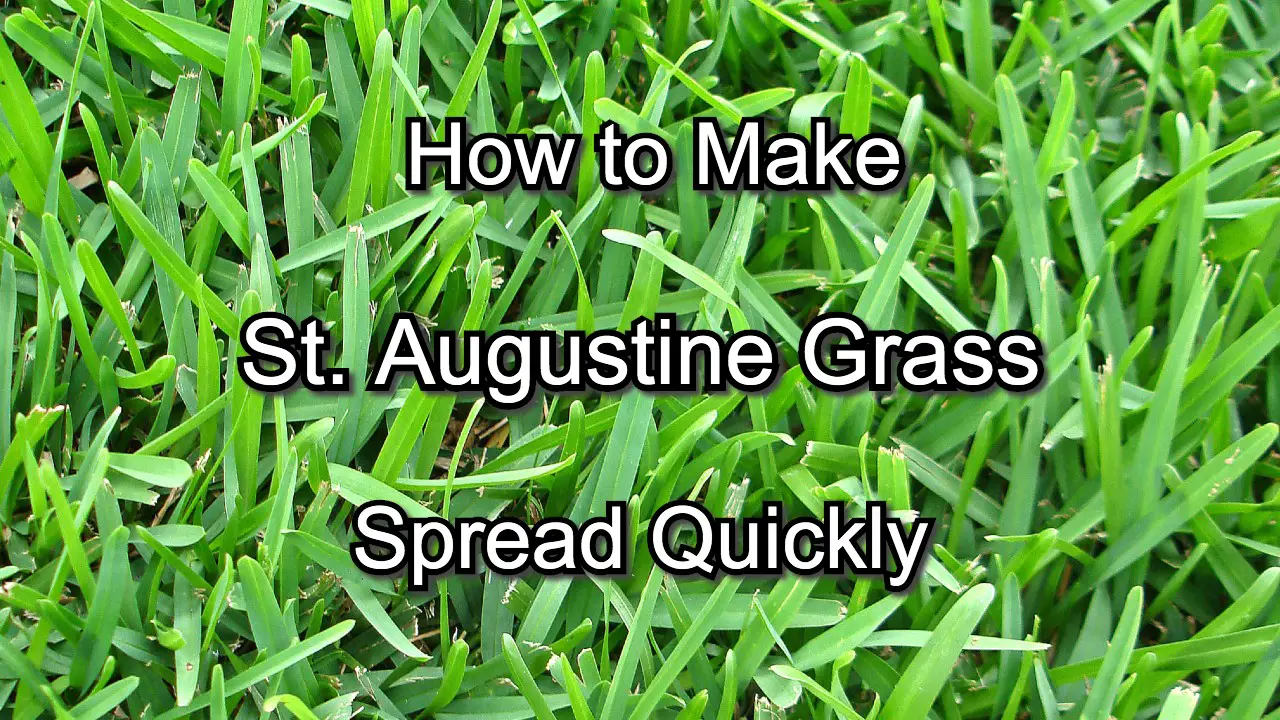St Augustine is an excellent variety of lawn grass for warmer climates. When cared for properly, it provides a resilient, thick turf that can tolerate both shade and heat, but many looking to start a new lawn wonder how to make St. Augustine grass spread quickly. With a little effort and the right knowledge, it can be quite straightforward. This article will teach you how to prepare and maintain a lawn of fast-growing St. Augustine, as well as what to look out for if it seems to be slowing down.
St Augustine ‘spreads’ as it grows. This unique growth pattern is facilitated by stolons, which are horizontal growth shoots that travel just above the ground. It makes for faster coverage and less waiting time after putting in plugs. This is why St. Augustine has excellent potential for growing a thick, carpet-like lawn. Here is the solution:
To make St. Augustine grow and spread faster, be sure to start with a well-aerated soil that is pH tested. Consider planting high-density plugs for faster results. Lastly, make sure to keep your lawn well-watered, fertilized, and weeded. St Augustine will thrive and spread the quickest in a healthy, nurtured environment.
Lawn keepers that are on a budget do not always have the option to lay down a ready-to-use lawn in sod form. Fortunately, this article will take you step by step through the process of getting st. Augustine grass to spread faster. The faster your grass spreads, the sooner you will achieve that thick, lush lawn you always dreamed of.
Step 1: Preparing the Soil for St Augustine Grass
St. Augustine will take root and spread faster in the right soil conditions. Be sure to aerate your lawn before planting the grass – soil that is too hard or compact will make it difficult for the stolons to take root and spread quickly.
Use a soil that has good drainage, with more of a sandy texture and less of a clay-like texture. You may consider grading the yard as well if you notice uneven areas or have a lawn placed on an incline. This will prevent pooling when watering and potential grass rot.
Just as important is a soil test; use an at-home soil testing kit to test the pH of your lawn soil. You are looking for a pH of about 6.5. If the soil’s pH is too low, you can raise it with a lime treatment.
If it is too high, it can be lowered using a fertilizer that contains ammonium nitrate. Making sure your St Augustine grass will be planted into the right soil will save you time, effort, and money down the road.
Table could not be displayed.St Augustine roots need room to breathe in order to flourish and spread. Make sure your soil is light and aerated before planting the lawn. Consider using clean, sandy topsoil to ensure the grass can breathe.
Tip: Plant your plugs in the summer, at the peak of the growing season.
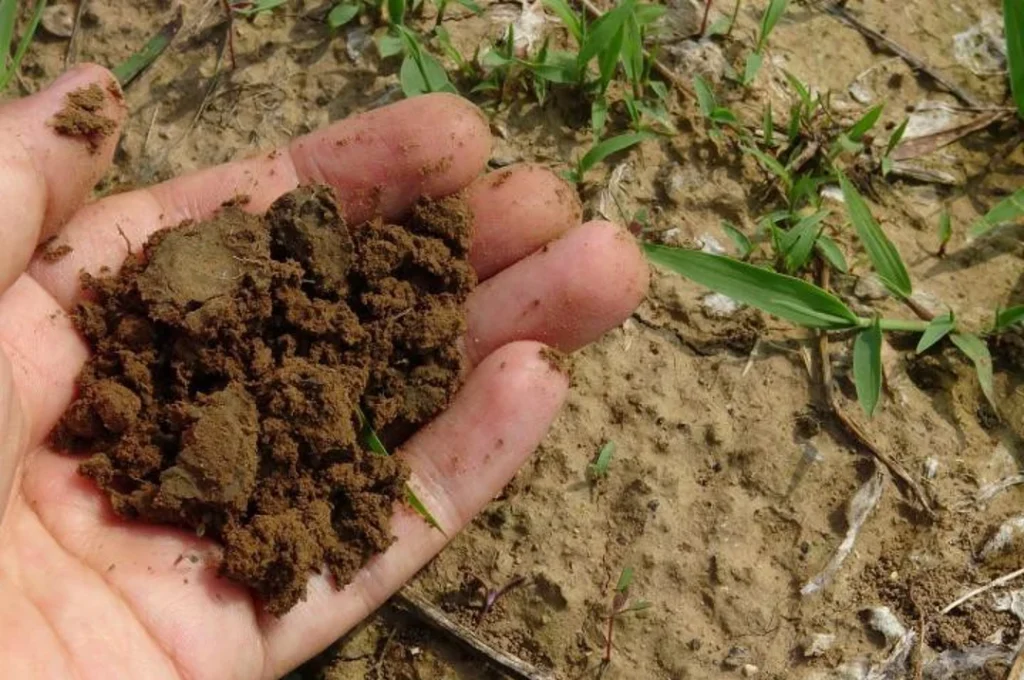
Step 2: Planting Plugs
Table could not be displayed.This step provides great results, so for those wondering how to make st. Augustine grass spread quickly, pay attention!
Once your soil is optimal and ready for planting, it is time to decide how you will plant your plugs. Because of St. Augustines unique growth pattern, it is not recommended to plant your lawn using seed. In fact, St. Augustine’s seed is near impossible to come by.
Starting your lawn with sod is a great option, especially if you want fast results – however, it can be costly. By installing plugs, the results will not be instant, but with the right environment and the best treatment, you won’t have to wait long.
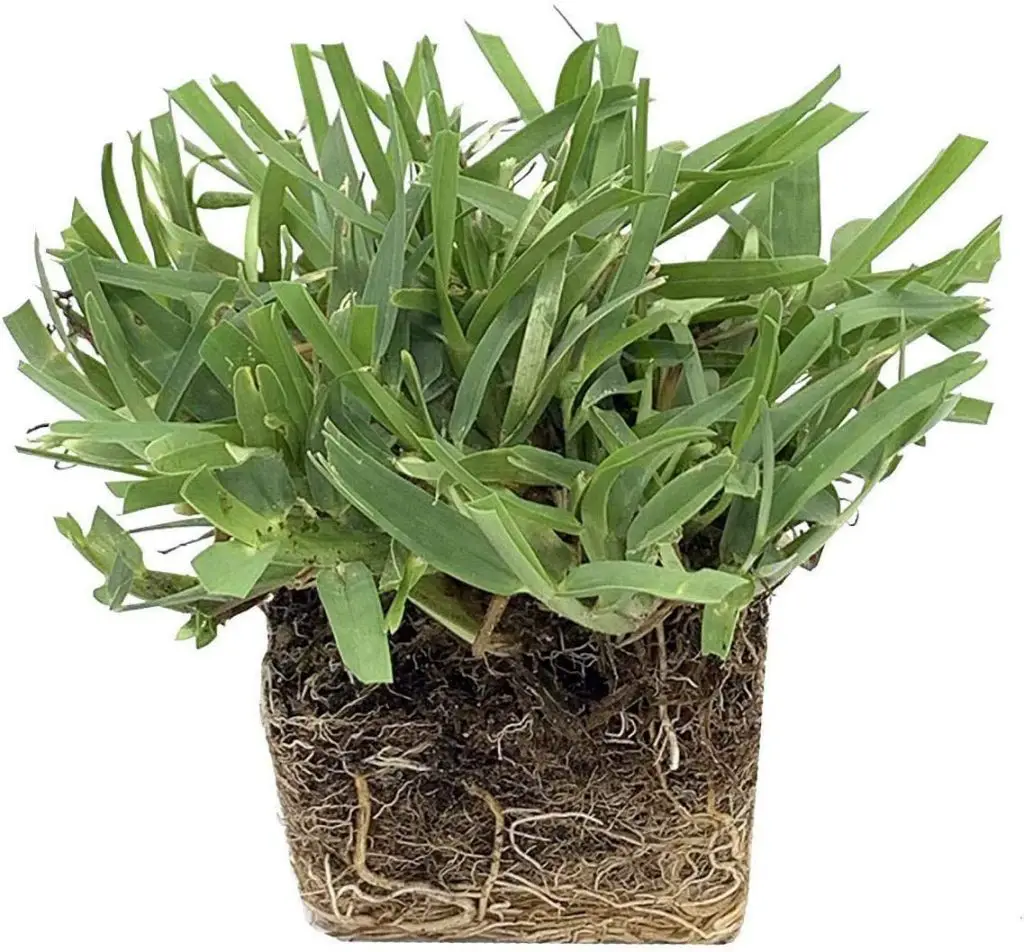
There are three methods for planting plugs into your lawn, as shown below. The basic difference is the number of plugs planted per square foot.
Basically, the higher the density, the faster your lawn will be covered with St. Augustine grass. The lower the density, the lower the cost, and the slower you will be to achieve the end result.
There are three methods for planting plugs into your lawn, as shown below. The primary difference is the number of plugs planted per square foot.
Basically, the higher the density, the faster your lawn will be covered with St. Augustine grass. The lower the density, the lower the cost, and the slower you will be to achieve the end result.
How Long Does it Take for St. Augustine to Spread?
Usually, it takes about newly planted St. Augustine plugs about 7 – 14 days to begin spreading. However, the amount of time it will take to fill the bare spots will depend on the spacing of your plugs.
Below we have a guide on high, typical, and low-density plug planting. Keep in mind, if covering a large area, the cost and labor will vary greatly depending on your method.
| HIGH DENSITY | TYPICAL | LOW | |
|---|---|---|---|
| Spacing | 6-11 inches between each plug | 12-18 inches between each plug | 13-24 inches between each plug |
| Time to fill in | Within one growing season | Up to a year | Over an entire year |
| Cost or Budget | High | Average | Low |
| Labor | Most | Average | Least |
Remember that these estimates are made based on perfect conditions – keep reading to find out how to make St. Augustine grass grow and spread quickly.
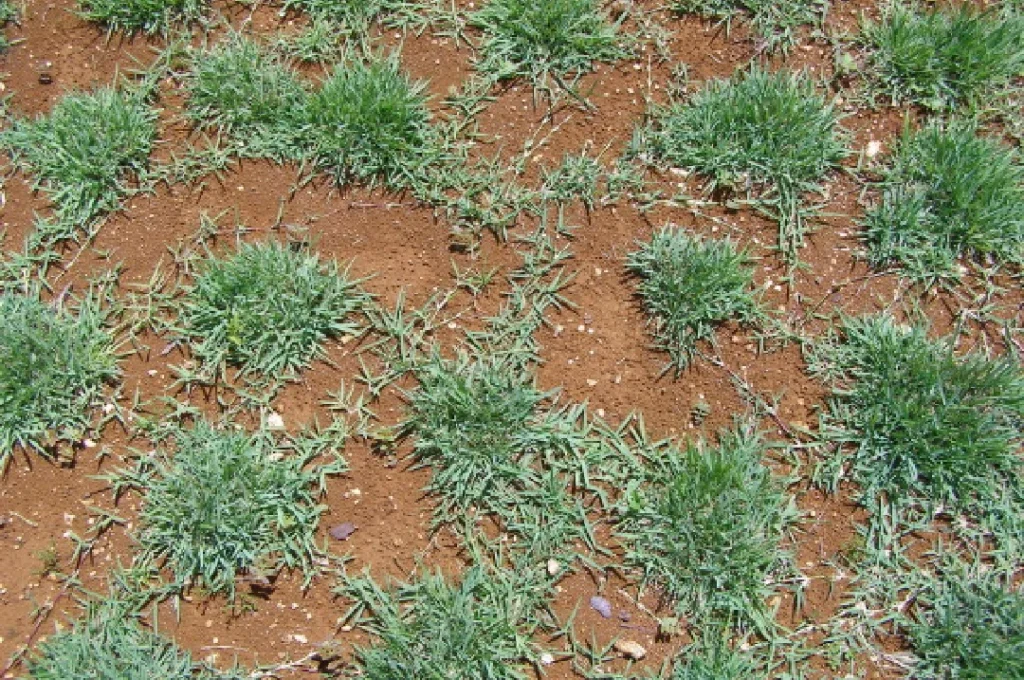
Step 3: Keep a Healthy Lawn Care Routine
It’s important to set up a routine of different tasks to take care of your St. Augustine lawn, or any lawn for that matter.
Water regularly
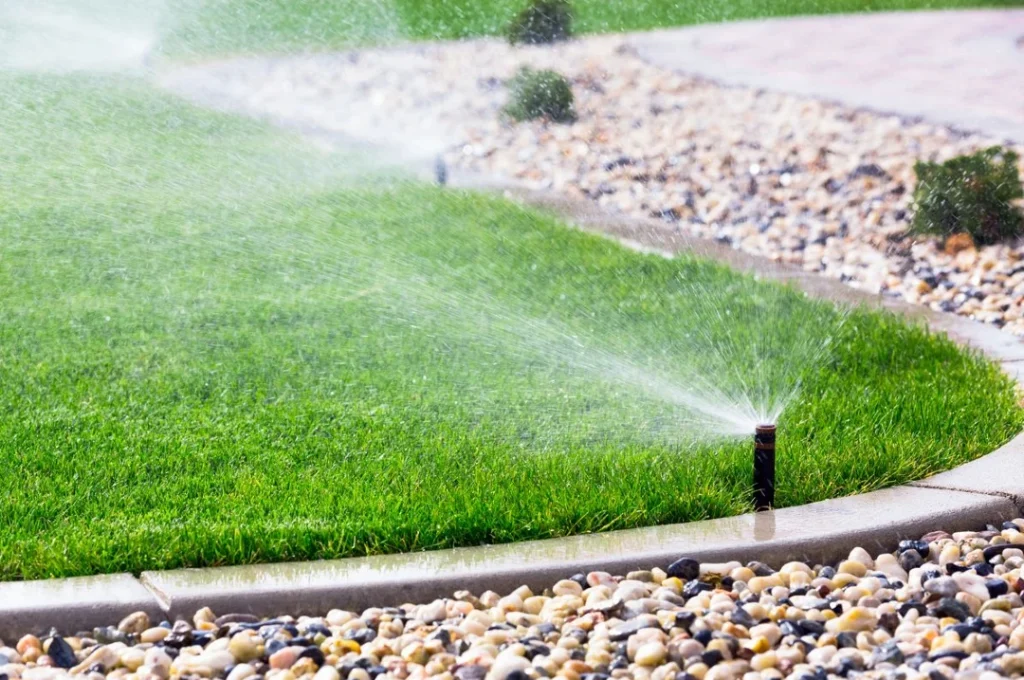
In the first few weeks after putting down St. Augustine grass, your lawn will require a strict watering schedule of several light waterings per day. Pay attention to the weather as well – if particularly hot and dry, water a little extra.
After two weeks, soak the lawn up to half an inch daily. From here, continue to water several times a week until the grass is established enough, only to need watering when hot and dry. This should be about six weeks from planting.
When not appropriately watered, St. Augustine may go into dormancy, as it would during a drought. This will stop the grass from spreading.
Mow Your Lawn at the Right Height
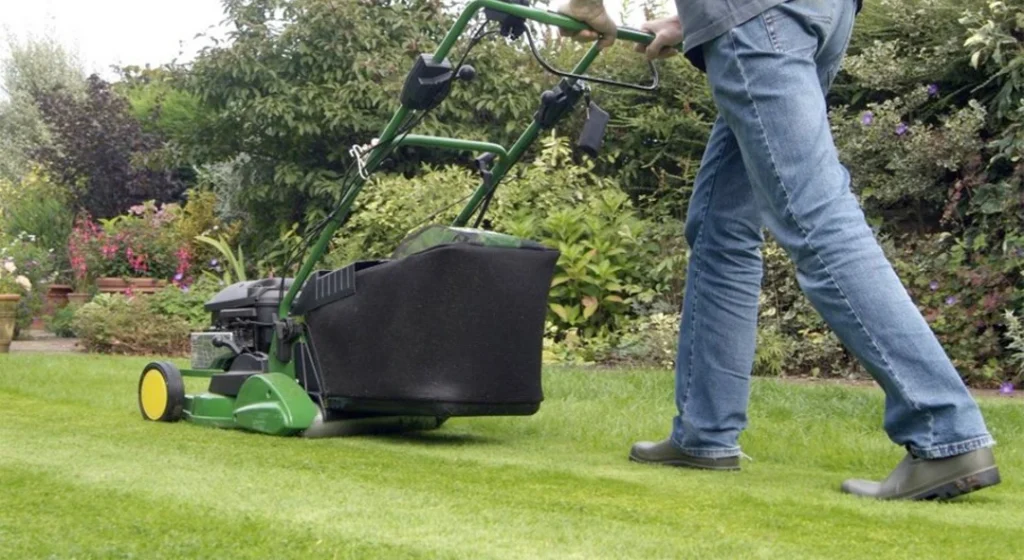
Once your lawn of St. Augustine grass is established, it needs proper care and maintenance. A common mistake is cutting your grass too short. In order to spread quickly, St Augustine grass needs to be able to grow to at least 2.5 inches before being cut.
Set your mower at 3 inches to be sure. If you do not bag and collect your clippings, be sure to mow often not to overwhelm your lawn with a lot of dead organic matter. This contributes to thatch, a layer of build-up found just above the soil.
Very thick thatch can hinder your St. Augustine grass from growing quickly, as the stolons need room to spread and breath – also just above the soil.
Fertilizer to help the Spread of St Augustine
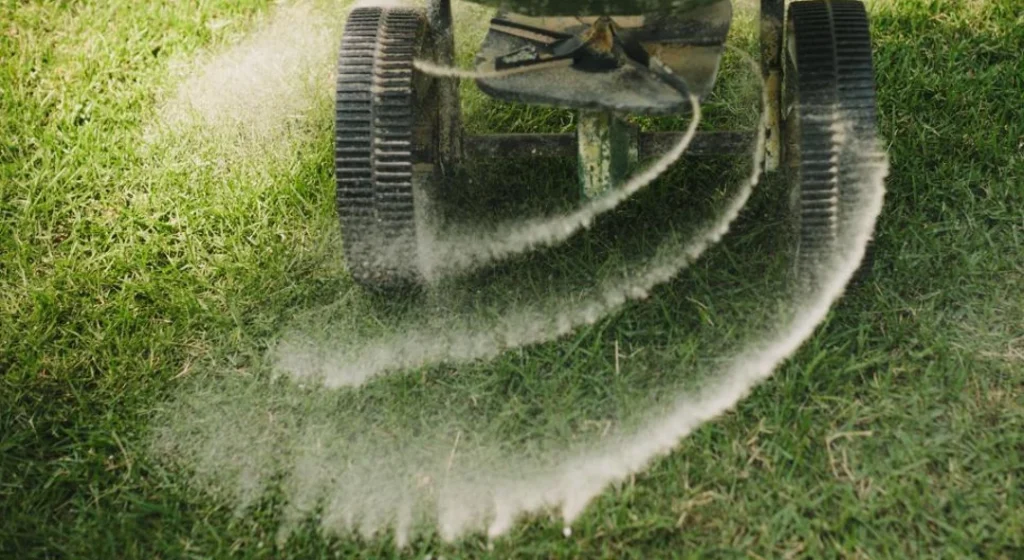
Just as your lawn needs water to thrive, it needs nutrients. When fertilizing St. Augustine grass after putting in plugs, use a starter fertilizer, such as Scotts Turf Builder for new grass. This will ensure the new roots are getting the right amount of phosphorus to build a solid root system.
Nitrogen is also a vital nutrient for thick, green lawns. However, too much nitrogen too early can potentially burn a lawn. Switch over to a nitrogen-rich fertilizer once the lawn is well established to promote quicker growth.
Remember to fertilize only during the growing season – fertilizing dormant grass will do nothing but give your weeds a head start. If you are seeing bald patches or thin spots on your lawn, always start out by trying a slow-release nitrogen-rich fertilizer.
This will boost the spread of St. Augustine grass and should deepen the color of your lawn as well. Read more about the best St. Augustine fertilizers.
Factors that Slow Down St Augustine Growth
What could be the reason for St. Augustine grass just simply not growing? If it just so happens the regular watering, proper mowing, and the right fertilization routine are not improving the spread of your St. Augustine grass, there are other factors that may be responsible.
Luckily, once the problem is identified, there is always something that can be done.
Weeds
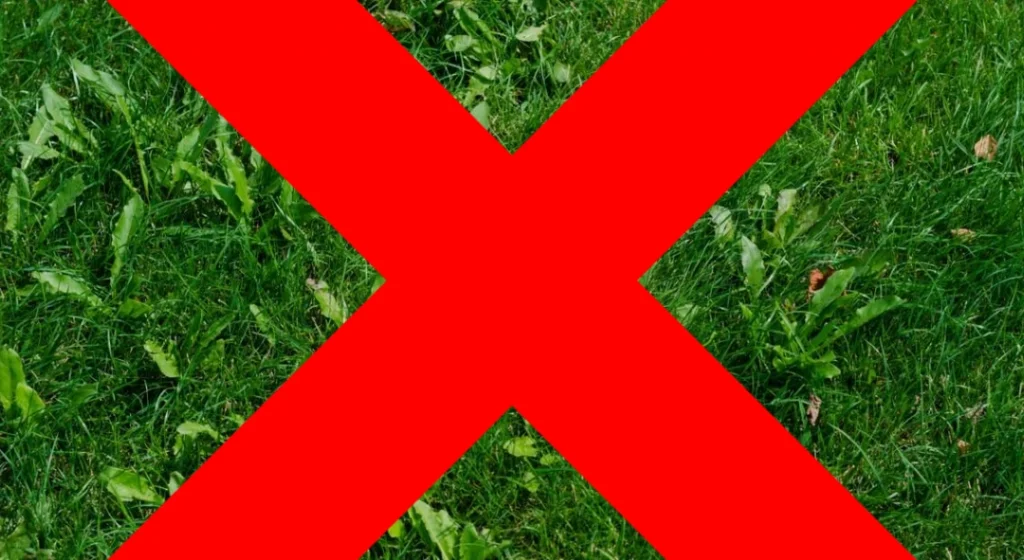
Weeds on a lawn are not only unsightly. They can be detrimental to their growth. Some invasive weeds and grasses, if given the opportunity, will move into the spaces meant for your St Augustine grass to grow into.
This is yet another reason to encourage the quick spread of St. Augustine – the faster it fills in your lawn, the less room there is for weeds.
To avoid a weed issue from the get-go, lay down a pre-emergent selective herbicide that will target the problem weed in your area. If you notice grassy weeds, such as crabgrass have invaded your lawn, it could be hindering your St. Augustine from spreading. It can sometimes take several seasons to rid your lawn entirely of weeds, so be preemptive.
Grey Leaf Spot

One of the diseases St. Augustine is prone to, and one reason your established lawn may not be growing and spreading to its full potential, is grey leaf spot. This is most common in hot and moist climates, such as Florida and other Gulf states, but could also be the result of overwatering.
Grey leaf spot loves moisture because it is a fungus that spreads by spores. It is distinguishable by its small grey spots on the blades of grass that eventually take over the entire blade.
To avoid this St. Augustine problem, be careful not to overwater. It is crucial to water your lawn regularly if you want the grass to spread and grow at its fastest, but too much will result in fungi such as this one.
St. Augustine Decline
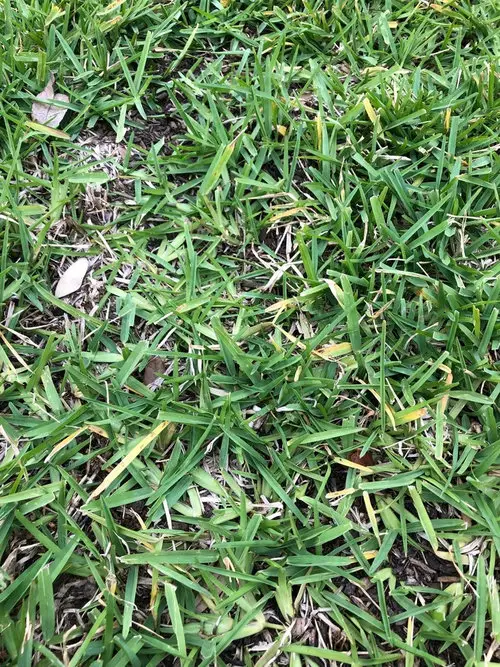
A virus that can be problematic for the growth and spread of your St. Augustine lawn is known as St. Augustine decline. This virus is most commonly known in Texas but can be found in the surrounding states as well.
St. Augustine decline makes your lawn more susceptible to environmental stress, such as drought, without making a strong recovery.
Grass with this virus will not be actively spreading and growing but will respond to an iron-rich fertilizer, although this is not an instant cure. Other than vulnerability, grass with the virus can be characterized by light spots and discoloration on the leaves, also known as stippling. After the first signs, St. Augustine’s decline is likely to kill your lawn within 3 years altogether.
The only way to avoid this virus is through prevention. Plant a variety of St. Augustine that is immune to the virus if you are concerned about St. Augustine’s decline slowing the growth of your turf.
Chinch Bugs
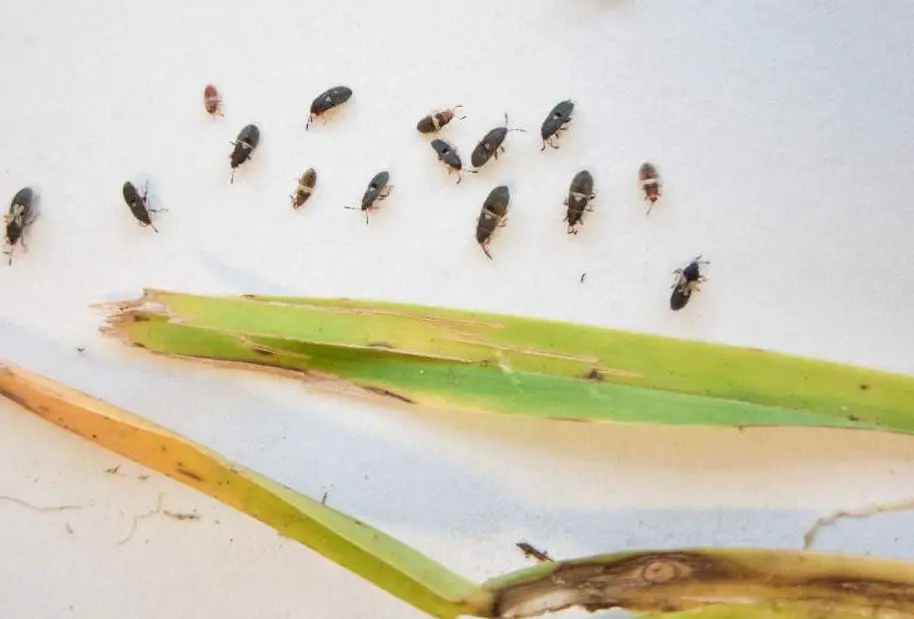
These little pests will definitely slow down the progress of your St. Augustine grass as it tries to spread. Southern Chinch bugs are the most common pests in St. Augustine lawns, due to their ideal environment being the same as St. Augustine grass – warm and moist.
The unusually shaped brown patches can identify chinch bugs they leave behind after feeding on your lawn. Often it will look like drought damage that doesn’t make sense because there has been plenty of rain or if you have watered enough.
Now, these bugs are tiny but can be seen with the naked eye upon closer inspection. So if you suspect chinch bugs are the reason your grass isn’t spreading or is in fact dying, look closely into the lawn’s thatch and see if you can spot them.
How to stop chinch bugs
The best way to stop an invasion of chinch bugs on your St. Augustine is proper lawn care. Preventing thatch build-up will prevent the pests from settling in their ideal home. Thatch is the build-up of decomposed plant matter that sits just above the soil.
You can avoid building up too much thatch by collecting lawn clippings when you mow, not over-fertilizing, and less frequent watering. Of course, if you do already have a problem with thatch, you can vertical mow or aerate – but be aware.
These methods will hinder the spread of St. Augustine grass temporarily and should be done when the lawn is at its healthiest, so it has the best chance to recover quickly. If your lawn has chinch bugs, it’s not too late. There are many chemical treatments and insecticides out there that are proven to work.
Keeping St. Augustine Healthy and Spreading
St Augustine is a great turf variety for lawn owners in warmer climates. It is both heat and shade resistant, it tolerates heavy foot traffic, and it has the potential to grow quickly into a beautiful, full lawn.
So now we have learned how to best get your St. Augustine to spread quickly, and some of the factors that may be hindering lawn growth. It is quite clear that the quickest and best result when starting from scratch is to plant more plugs closer together, or high-density.
From there, it is just as important to continue a strict watering routine and put down a pre-emergent herbicide. Once the lawn has matured, it is vital to keep the thatch down and mow often, to encourage new growth and discourage rot and pests.
We recommend products from companies like Amazon, which we also get a small commission from, to keep this website running. However, we want to stress that all of the products we recommend are tested, used by us, and 100% unbiased and true.

